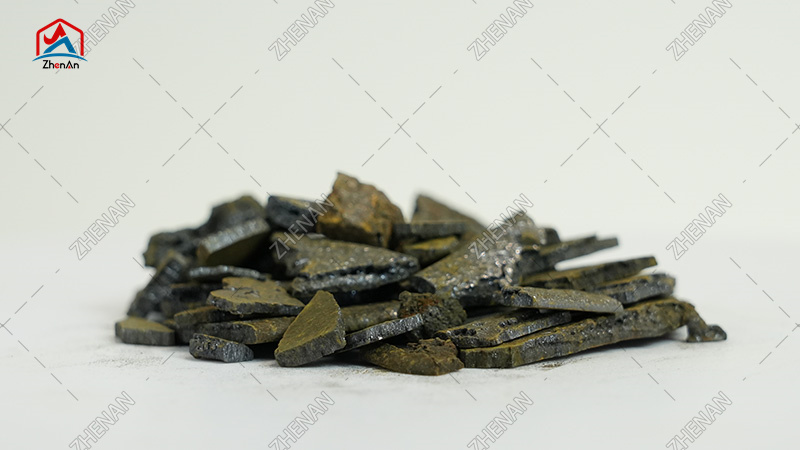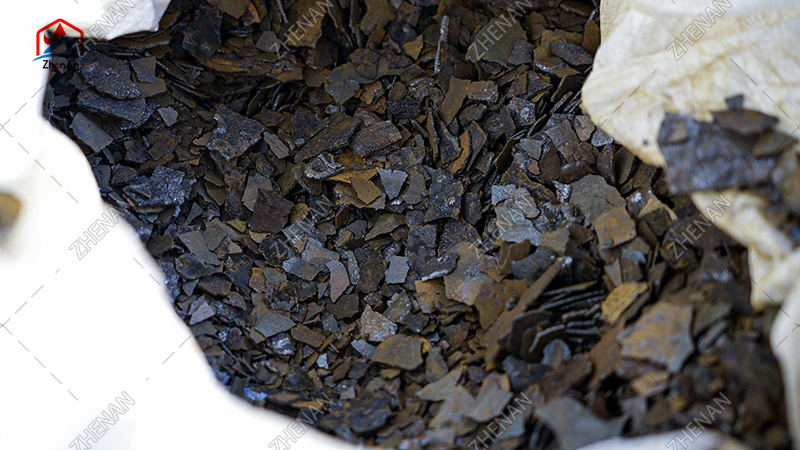To understand why V₂O₅ is used as a catalyst, it is essential to examine its chemical properties:
V₂O₅ is thermally stable and exhibits good solubility in polar solvents, which contributes to its effectiveness as a catalyst. Its ability to undergo reversible redox reactions enables it to function in various catalytic processes, particularly those requiring oxidation or reduction.
V₂O₅ is primarily known for its role in oxidation reactions. In these processes, it acts as an oxidizing agent, accepting electrons from other substances. The general mechanism can be described as follows:
This ability to switch between oxidation states allows V₂O₅ to facilitate continuous reactions without being consumed.
The catalytic activity of V₂O₅ is also influenced by its surface area and morphology. Nanostructured forms of Vanadium pentoxide V₂O₅ often exhibit enhanced catalytic performance due to increased surface area, allowing for more active sites for reactions to occur.

One of the most significant uses of Vanadium pentoxide V₂O₅ is as a catalyst in the Contact Process for producing sulfuric acid. This process involves the oxidation of sulfur dioxide (SO₂) to sulfur trioxide (SO₃) in the presence of oxygen (O₂):
2SO2(g)+O2(g)→V2O52SO3(g)2 SO₂(g) + O₂(g) \xrightarrow{V₂O₅} 2 SO₃(g)2SO2(g)+O2(g)V2O52SO3(g)Importance: Sulfuric acid is a key industrial chemical used in fertilizers, batteries, and various chemical syntheses. The efficiency of the Vanadium pentoxide V₂O₅ catalyst significantly contributes to the overall yield and speed of the reaction.
V₂O₅ is also utilized in catalytic converters to reduce harmful emissions from internal combustion engines. The converter facilitates the oxidation of carbon monoxide (CO) and hydrocarbons (HC) into carbon dioxide (CO₂) and water (H₂O):
Environmental Impact: The use of V₂O₅ in catalytic converters helps to minimize air pollution and increase the efficiency of automobiles, making it an essential component in modern vehicles.
In organic chemistry, V₂O₅ is used as a catalyst in various oxidation reactions, such as the oxidation of alcohols to aldehydes and ketones. The ability to selectively oxidize specific functional groups makes V₂O₅ a valuable tool in synthetic chemistry.
Example Reaction:
This selectivity is crucial in pharmaceutical and fine chemical synthesis, where specific products are desired.
Vanadium pentoxide V₂O₅ is employed in dehydrogenation reactions, particularly in the production of alkenes from alkanes. This reaction is vital in petrochemical processes and the synthesis of various chemicals.
Reaction Example:
The ability to facilitate such reactions efficiently highlights the versatility of Vanadium pentoxide V₂O₅ as a catalyst.
V₂O₅ exhibits high catalytic activity, facilitating reactions at lower temperatures and pressures compared to non-catalyzed processes. This efficiency translates to energy savings and reduced operational costs.
The ability of Vanadium pentoxide V₂O₅ to selectively promote certain reactions while suppressing side reactions is a significant advantage. This selectivity is essential in industrial applications where the purity of products is crucial.
V₂O₅ is thermally stable and can withstand harsh reaction conditions, making it suitable for various industrial processes. Its stability ensures a long catalyst lifespan, reducing the need for frequent replacements.
Compared to other noble metal catalysts, Vanadium pentoxide V₂O₅ is relatively inexpensive. This cost-effectiveness makes it an attractive choice for large-scale industrial applications.

Despite its advantages, the use of Vanadium pentoxide V₂O₅ as a catalyst is not without challenges:
V₂O₅ catalysts can become deactivated over time due to the accumulation of byproducts, sintering, or poisoning by impurities. Regular regeneration or replacement of the catalyst may be necessary to maintain efficiency.
While V₂O₅ is less toxic than some other heavy metals, its use still raises environmental concerns, particularly related to its disposal and potential leaching into the environment. Proper waste management practices are essential.
Ongoing research is focused on understanding the detailed mechanisms of Vanadium pentoxide V₂O₅ catalysis at the molecular level. Advanced techniques such as spectroscopy and computational modeling are being employed to gain insights into how V₂O₅ interacts with various substrates.
The development of nanostructured Vanadium pentoxide V₂O₅ catalysts is a promising area of research. By manipulating the size and shape of Vanadium pentoxide V₂O₅ particles, researchers aim to enhance catalytic activity and selectivity, paving the way for more efficient industrial processes.
With the increasing emphasis on sustainability, Vanadium pentoxide V₂O₅ is being explored for applications in green chemistry. Its ability to facilitate eco-friendly oxidation reactions aligns with the goals of reducing environmental impact in chemical manufacturing.
The use of V₂O₅ in energy storage technologies, such as vanadium redox flow batteries, is an exciting area of exploration. Research into improving the electrochemical performance of Vanadium pentoxide V₂O₅ could lead to more efficient energy storage solutions.
Vanadium pentoxide (V₂O₅) is a critical catalyst in various industrial processes, particularly for its role in oxidation reactions. Its unique chemical properties, including high catalytic activity, selectivity, and stability, make it a valuable resource in the production of sulfuric acid, automotive catalytic converters, organic synthesis, and more. While challenges such as deactivation and environmental concerns exist, ongoing research and development are likely to enhance its applications and performance.
As industries continue to seek more efficient and sustainable processes, the importance of Vanadium pentoxide V₂O₅ as a catalyst will only grow. Understanding its mechanisms and exploring new applications will be crucial for leveraging its full potential in modern chemistry and technology. The future of vanadium-based catalysis is promising, with the potential to contribute significantly to both industrial efficiency and environmental sustainability.